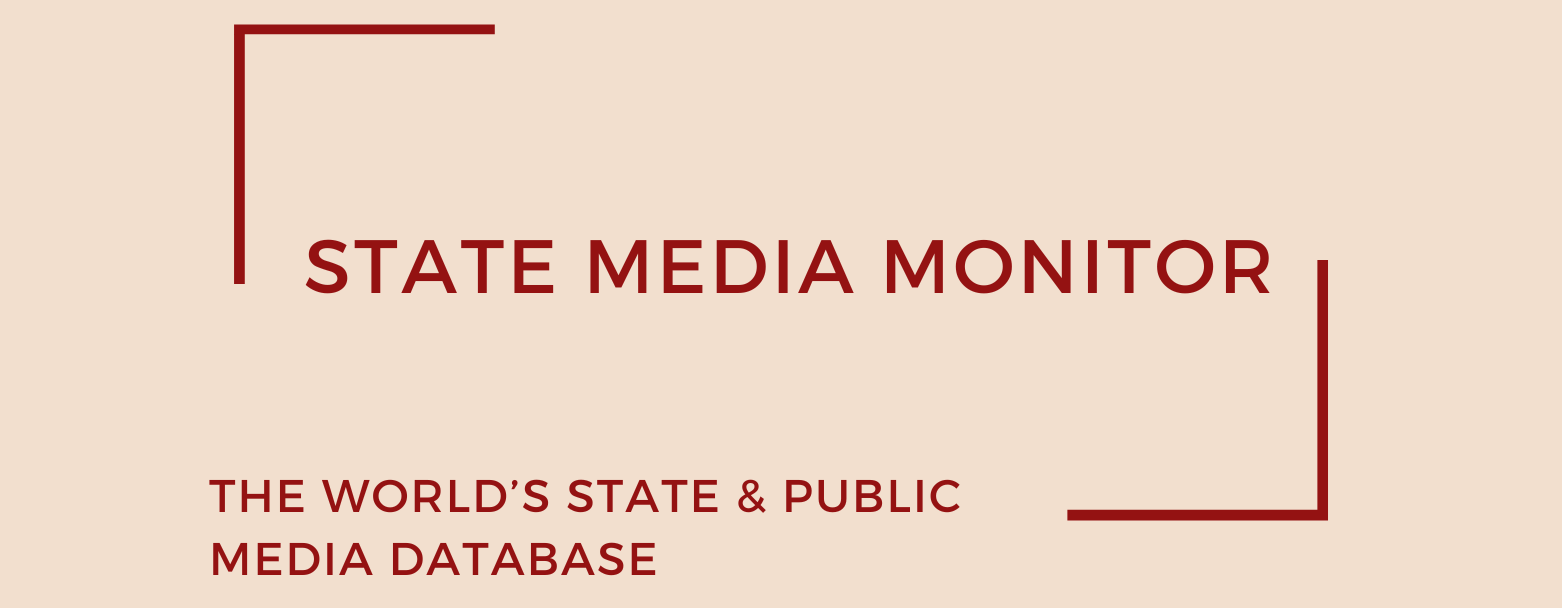State and Public Media in Eurasia in 2025
The Eurasian region presents significant challenges for state-controlled media. Traditional outlets such as television and radio remain dominant, enjoying extensive reach and large audiences. Their popularity makes them valuable instruments for governments, which leverage them to advance political agendas.
The media landscape in Eurasia continues to tighten under heavy state influence, with the share of government-dominated outlets rising by one percentage point to 98% of the 69 surveyed in 2025, despite the addition of five new outlets. This trend underscores the persistence of an autocratic environment and the erosion of progressive media.
Although the share of state-controlled (SC) organizations (media directly controlled by the government) has fallen slightly (from 83% to 79%) the number of captured private and public outlets (indirectly controlled by the government) has reached a record high of 13, representing a five-point increase in their overall share and effectively offsetting the decline in SC-classified media.
Independent public media remain extremely limited, represented only by two outlets, in Moldova and Ukraine: Teleradio-Moldova (TRM) and the Public Broadcasting Company of Ukraine (Suspilne). TRM was recently reclassified from Independent State-Funded/State-Managed Media (ISFM) to Independent State-Funded Media (ISF) because leadership appointments are increasingly made through independent mechanisms rather than state-influenced appointments. Still, Eurasia records the world’s second-lowest concentration of independent public media after Sub-Saharan Africa. This overwhelming government dominance restricts access to unbiased and neutral information sources, particularly foreign ones, for much of the region’s population.
The five newly identified media outlets added to the database, three in Uzbekistan, one in Kazakhstan, and one in Russia, share a common characteristic of subordination to government oversight.
Kazakhstan’s Qazcontent is a typical example of state-controlled media, with a board appointed by government officials and funding drawn almost entirely from state coffers. Editorially, it serves as a vehicle for state propaganda, reinforcing national values and disseminating official policies.
The other four outlets, Russia’s African Initiative and the three Uzbek outlets Mening Yurtim (MY5), Daryo.uz, and Radio Grand, are classified as captured media (either Captured Public (CaPu) or Captured Private (CaPr) in our typology).
Launched in 2023, African Initiative is another Russian government-controlled outlet created to promote propaganda abroad. While officially presented as a project to strengthen cultural ties between Russia and African audiences, including younger viewers, its activities align to a large extent with Moscow’s broader information strategy.
The Uzbek outlets, by contrast, are inward-looking and focused on domestic audiences. All are subject to government influence through editorial directives and structural leadership. MY5 and Daryo.uz are operated by state-owned corporations and target younger audiences with entertainment and educational programming, with Daryo.uz maintaining a particularly strong digital presence. Radio Grand, although formally registered as a private entity, retains links to the state through partial government ownership. Primarily a music and information broadcaster, it must, like all radio stations in Uzbekistan, strictly follow the guidelines issued by Uzkomnazorat, the country’s de facto media regulator, when covering political and social issues.
Media outlets across much of Eurasia have traditionally fallen within Moscow’s sphere of influence. Since the onset of Russia’s war in Ukraine, however, the picture has become more fragmented. In Belarus, for instance, media remain fully synchronized with Russian propaganda, while countries such as Moldova, Georgia, and Ukraine have stepped up their anti-Russia strategies by introducing bans or restrictions on Russian television channels and news content. By contrast, media systems in Central Asian countries such as Kazakhstan, Kyrgyzstan, and Uzbekistan present a more mixed picture: although domestic governments exercise strong control over local outlets, Russian narratives continue to circulate widely, particularly through cable, satellite, and online platforms. Unlike Moldova or Ukraine, however, Central Asian outlets remain heavily government-controlled, which reinforces the influence of state-driven agendas.
The broader trend of de-globalization—exacerbated by the United States’ retreat from international engagement under the Trump administration, particularly through cuts to funding for independent media organizations worldwide—has created further space for non-Western powers, including Russia, to shape global discourse. In the media sphere, this shift is visible both in the operation of an expanding network of Russian-backed outlets targeting international audiences (the launch of the African Initiative being the most recent example) and in the strengthening of strategic ties with other major powers, illustrated by the cooperation agreement between Russia’s state news agency TASS and China’s Xinhua.
Overall, the Eurasian public media landscape is likely to remain deeply divided, particularly in the context of the war in Ukraine. Much will depend on the trajectory of the conflict and the outcomes of political contests across the region, which may tilt the balance either against or in favor of Moscow. What is certain is that Russian state propaganda continues to work tirelessly to influence political processes in Eurasian countries, with significant implications for how the media operate. In such a politically charged environment, media freedom can be expected to remain strictly limited and severely constrained for the foreseeable future, reinforced by the tight grip that states maintain over most of the region’s media ecosystems.d
Read Eurasia Overview 2024
Read Eurasia Overview 2023
Read Eurasia Overview 2022
Read Eurasia Overview 2021
Citation (cite the article/profile as part of):
Dragomir, M. (2025). State Media Monitor Global Dataset 2025.
Media and Journalism Research Center (MJRC).
Zenodo.
https://doi.org/10.5281/zenodo.17219015
This article/profile is part of the State Media Monitor Global Dataset 2025, a continuously updated dataset published by the Media and Journalism Research Center (MJRC).
